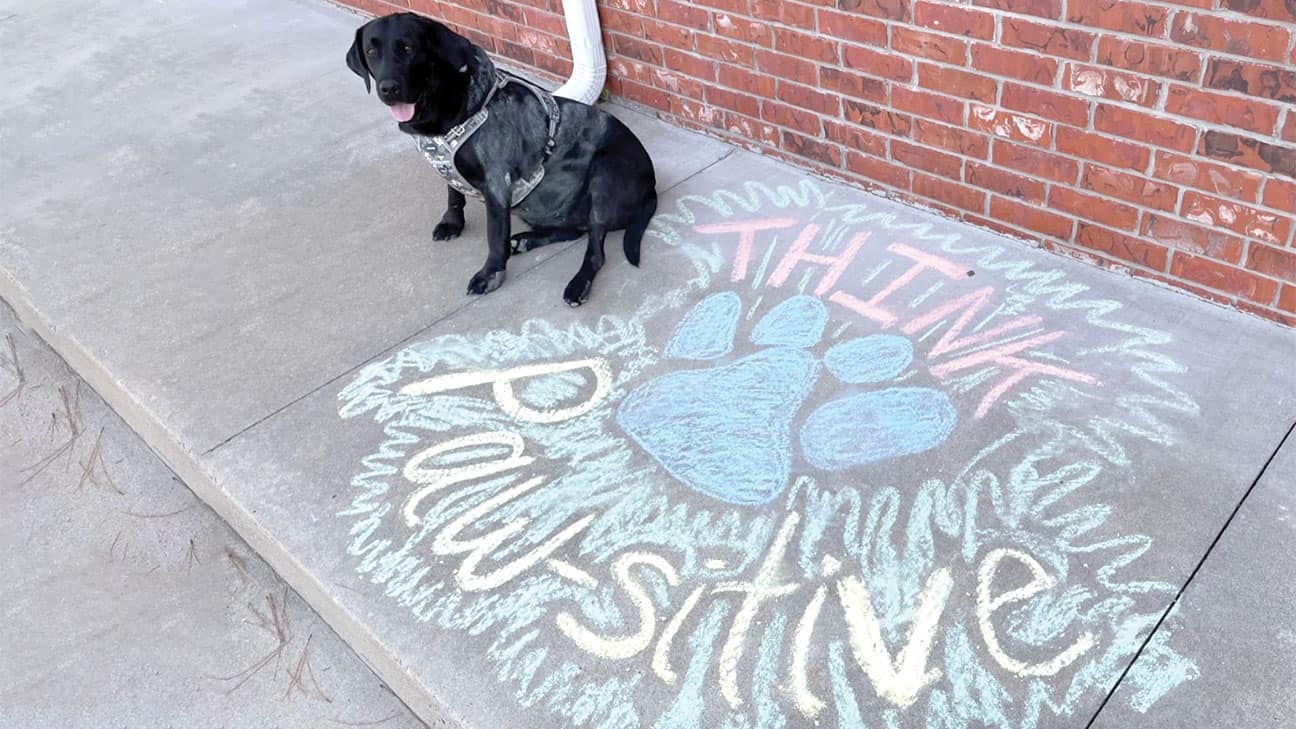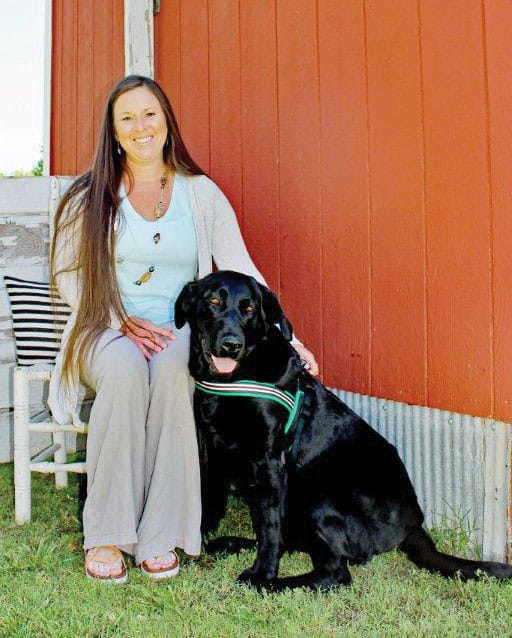
Casey helps patients to think paw-sitive during therapy visits.
Animal Assisted Interventions help make therapy more comfortable
Published June 1, 2022By Chris Jennings
Choctaw Nation Behavioral Health is taking steps to help patients feel more comfortable during visits by offering Animal Assisted Interventions (AAI). AAI are structured meetings or therapy sessions with specific goals to incorporate animals in health, education and human services. These goals can produce therapeutic gains and improve health and wellness.
Examples of AAI include Animal Assisted Therapy (AAT), Animal Assisted Activities (AAA), and Animal Assisted Workplace Well-being (AAWW).
Casey, an American Kennel Club (AKC) registered Labrador retriever, and her owner, Rachel Long, a licensed professional counselor with the Choctaw Nation, see patients of all ages at the Windhorse Family Counseling Center in McAlester, Oklahoma. She also visits the group therapy sessions at Chi Hullo Li and the Recovery Center and goes to Behavioral Health staff meetings.
The human-animal bond is strong. Research has shown that being in the presence of animals can reduce stress levels, blood pressure and anxiety. Long says, “It really helps people with their anxiety, calms them and soothes them a little bit better.”
In the case of Chi Hullo Li and the Recovery Center, residents may have had pets they had to leave at home or had a pet during their childhood. “A lot of them had to leave their pets behind or no longer have their pets. So, I think for them, it’s a bond with another animal that they had before,” said Long.
Getting Casey approved as a therapy dog wasn’t easy. Long, who has worked for the Nation for five years, saw a need and made it happen. “I took it upon myself to see what I could do to make this program happen. I kind of took it on as a special project on the side, in my free time,” said Long.

During that limited free time, Long went through the steps to get Casey certified as an AKC Good Citizen; took a 40-hour handlers course; tested with Pet Partners International, an animal-assisted therapy organization; and wrote the Choctaw Nation’s policy and procedures for the whole program.
Long, who completes most of the training at night and on weekends, says, “in the back of my head, I’ve always wanted to start this… ever since I started here five years ago, I was thinking, ‘well, why don’t we have this?’ And then I was like, okay, yep, we’re doing it. I definitely wanted to make this happen for the Choctaw Nation,” she said.
Making it happen for the Choctaw Nation has also made good things happen for her patients. Long says Casey can sense what kind of help patients need. “People that are really anxious, she just wants to sit by them and lay her head on them, she wants to be close to them. She can feel the anxiety or tension they’re having, and she wants to be there, kind of like to hug them,” she said.
“Kids interact a lot more with her, like playing with her and want her to sit or lay down. They think it’s really neat that they can say it, and she’ll do it. But adults, it’s more of an emotional support kind of connection that she makes with them,” said Long.
Staying on top of Casey’s mental health is also a priority for Long. She says they have a schedule for Casey so that she’s not overstressed by seeing patients back-to-back.
By working an hour and then taking an hour off, Casey can decompress and release some of the tension and anxiety she takes on from patients. “We take the time out, and we’ll go take a little walk around a couple of blocks, play outside for a little bit and get her a drink and a snack,” said Long.
Like many humans, Long says Casey will take something of her work home with her. Long says that on days when Casey doesn’t work, she’s just like a regular dog.
“She wants to play, she wants to go out, she wants to do things. On the days she works, she will come in the house, and she’ll hang out for just a little bit with us, and she’ll want to eat dinner and go straight to bed,” she said.
To open up more possibilities and maybe take some of the load off Casey, Long is working with one of her other dogs to be certified hopefully by the end of the summer. Long says she would like to get into more schools and do more community service projects with her other dog.
From that idea in the back of her head years ago to where she is now, Long says she is happy that she and Casey can help the citizens of the Choctaw Nation. “It makes me feel so excited that I’ve gotten the opportunity to do this and that my director has let me come this far with this program. And it makes me extremely happy to be able to provide this service for people and see the change that she makes for people and for patients of the Choctaw Nation,” said Long.